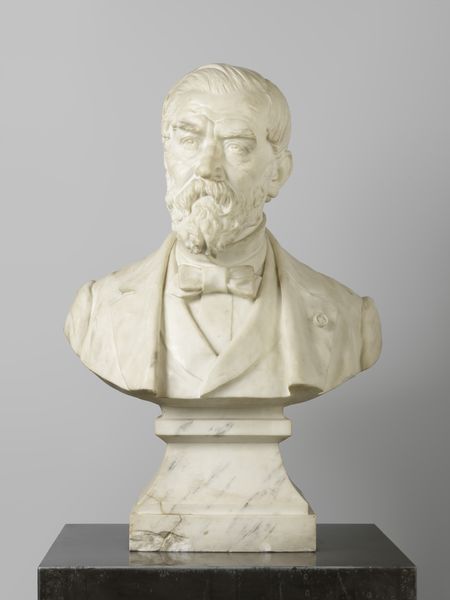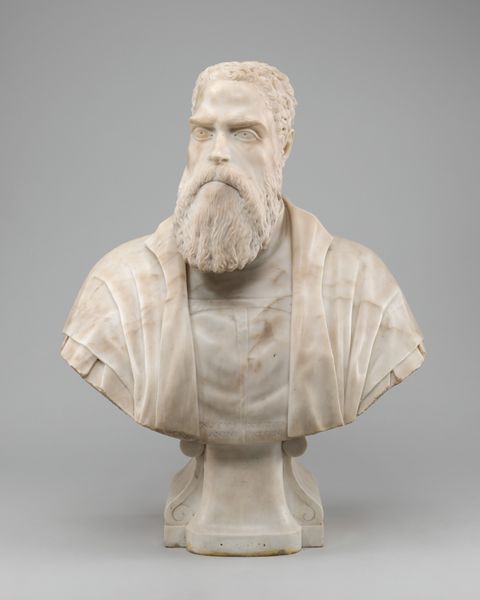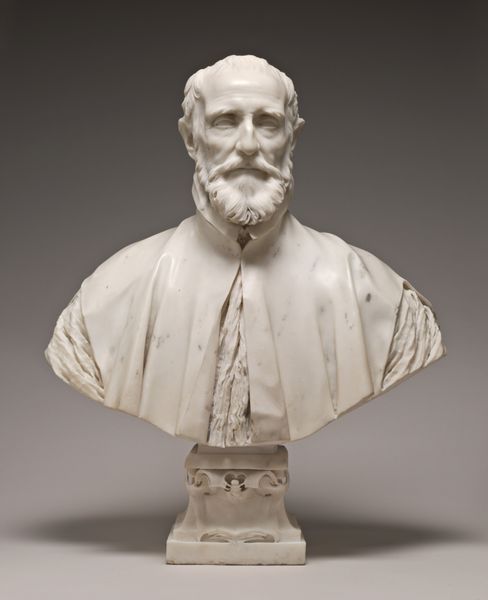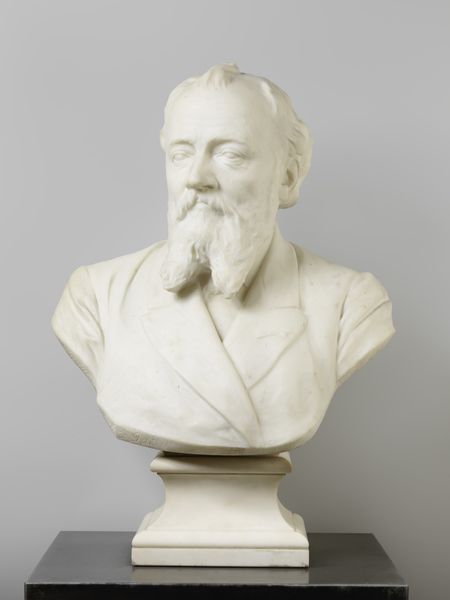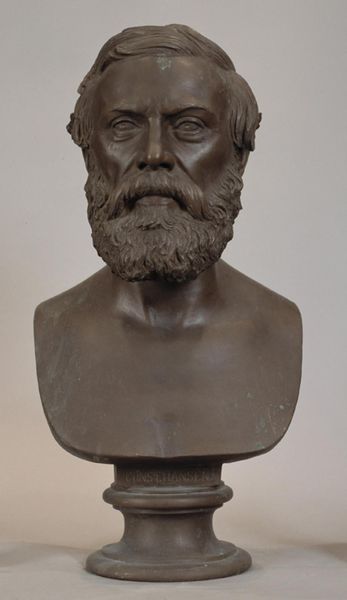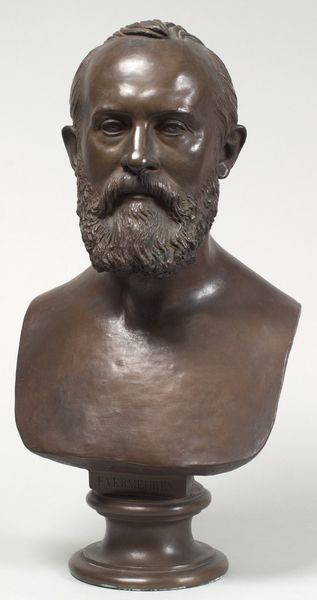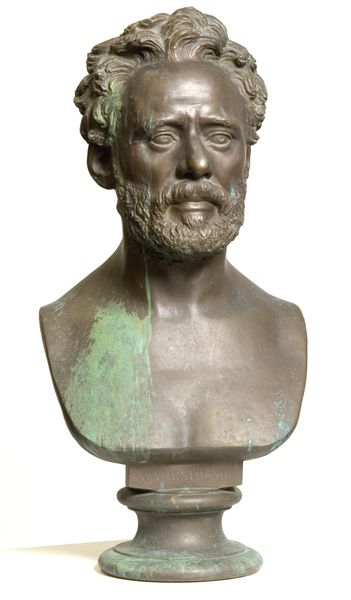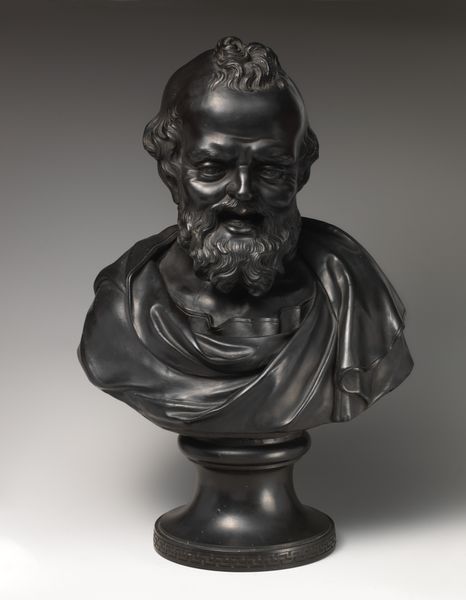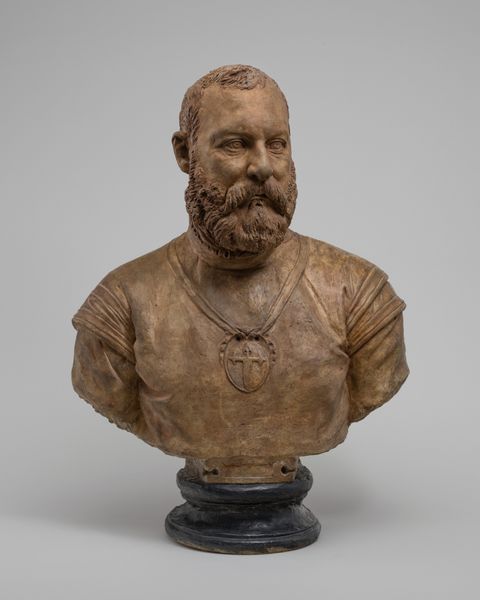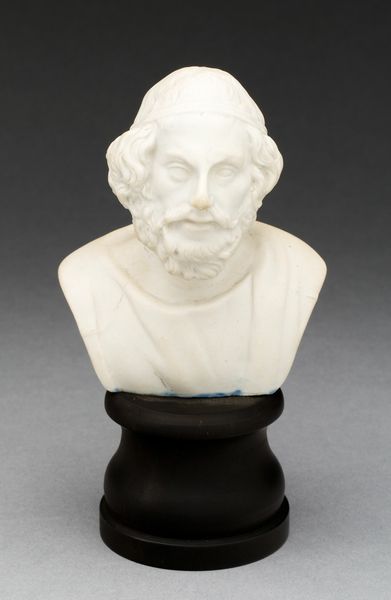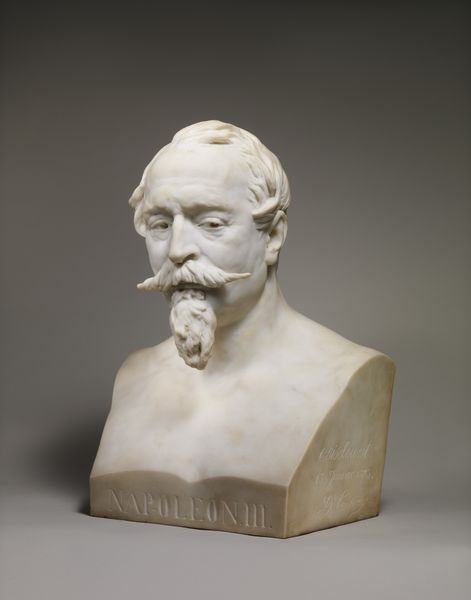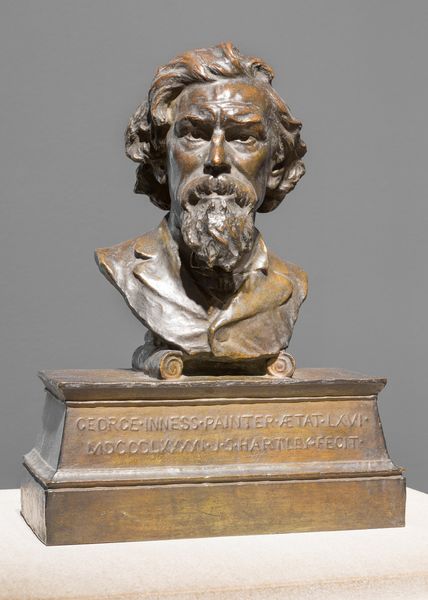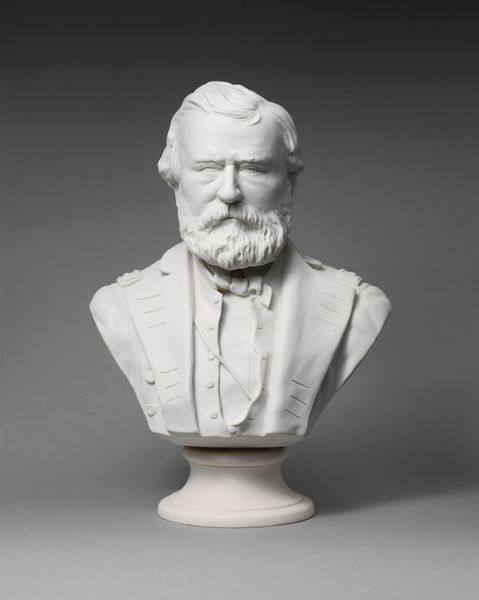
Dimensions: 72.4 × 44 × 29.4 cm (28 1/2 × 17 5/16 × 11 5/8 in.)
Copyright: Public Domain
Editor: This marble bust is "Mr. Potter Palmer," created in 1871 by Hiram Powers. It resides here at the Art Institute of Chicago. There’s something almost austere about its smooth surface. What strikes you when you look at this work? Curator: The initial draw is, predictably, to the almost classical idealism—the subject draped to recall Roman senators. But consider the materiality: the sourcing of the marble itself. Where was it quarried? Who were the laborers involved in extracting and transporting it? Editor: That’s a very different way to think about it. I hadn’t considered the physical origin of the marble at all. Curator: Exactly. This wasn’t mass-produced, but the repetitive labor involved in sculpting, the division between the artist’s vision and the artisans assisting, are important questions. Also, what does marble, as opposed to plaster or bronze, signify about Mr. Palmer's wealth and status? Editor: So the choice of marble elevates the subject and speaks to consumption habits? Curator: Precisely! How did Palmer's wealth enable this? This isn't just a portrait; it's a physical manifestation of economic power expressed through the exploitation of resources and labour. Editor: That shifts my whole perspective. I was focused on the artistry, but the story of the object itself tells a deeper story. Curator: Indeed. By acknowledging those forgotten hands involved in the means of making it, we recognize it as more than a static sculpture—it is a dynamic reflection of the society that birthed it. Editor: It really makes you rethink who is represented in a portrait like this, and how. Thanks!
Comments
No comments
Be the first to comment and join the conversation on the ultimate creative platform.
